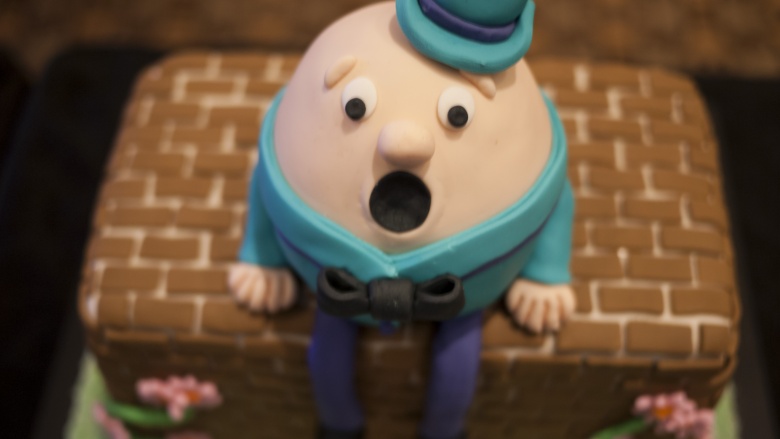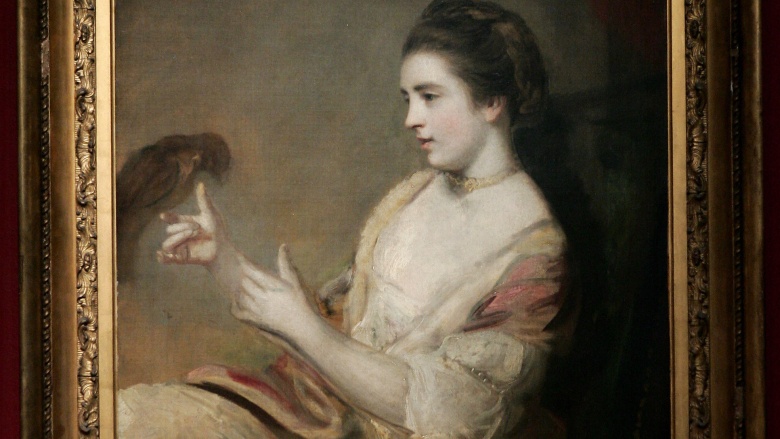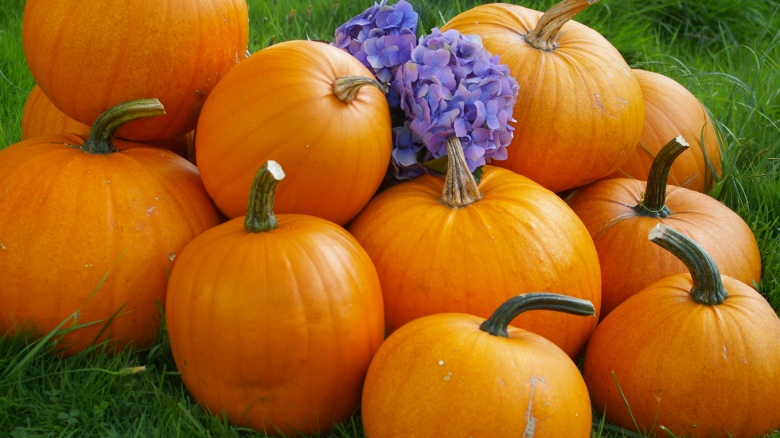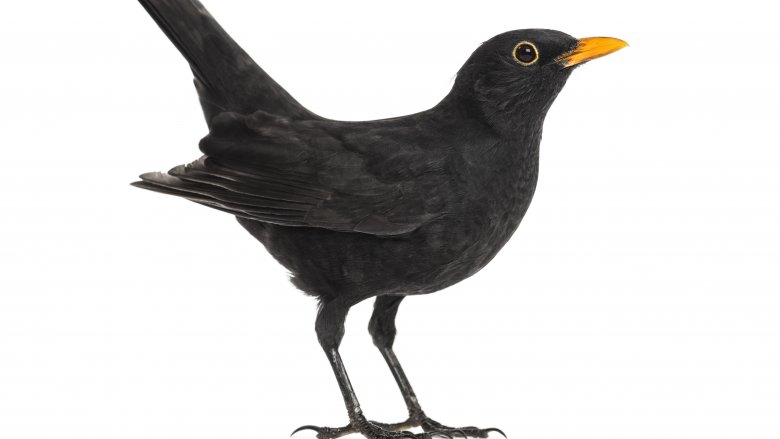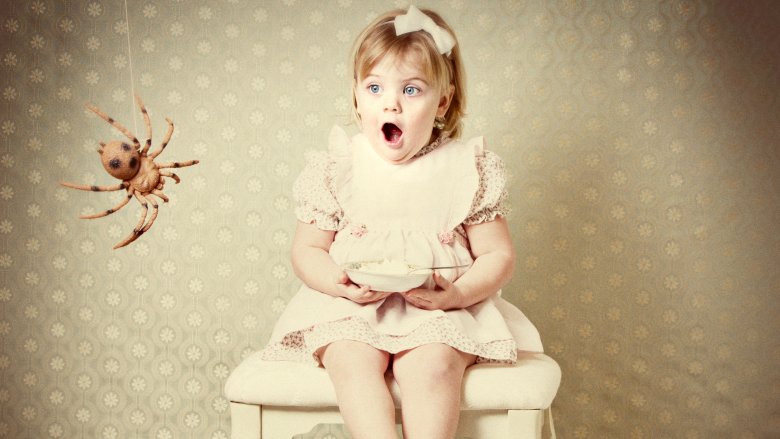The Dark History Of Classic Nursery Rhymes
Growing up, you were probably bombarded with all sorts of nursery rhymes about a girl being harassed by a spider while trying to eat curds and whey, or some anthropomorphic egg who can't keep his balance. For whatever reason, we were taught these nursery rhymes and we recited them happily, oblivious to the fact that a lot of these cutesy poems have darker meanings than we could have ever imagined. And before you blurt out, "Oh, so you mean like how 'Ring Around the Rosie' is about the Black Plague," stop right there and don't blurt that out because it's just an urban legend. We're here to shed some darkness on the happy sing-songs of your childhood.
Baa, Baa, Black Sheep
Would you believe it if we told you that "Baa, Baa, Black Sheep" was not actually about a black sheep that could talk and offer up its wool to a master, a dame, and a little boy who lives down the lane? As with most nursery rhymes, we aren't really certain when or where this poem originated, but many theories have been offered up about the meaning. One of the more popular ones, according to Ellen Castelow of Historic UK, is that it's about the heavy taxation on wool in 13th-century Britain. Whether or not this was secretly a way for adults to get kids to fear and resent taxes is unclear, but the "master" supposedly represented King Edward I, the "dame" was the church, and the "little boy" referred to all the shepherds who took care of the sheep. Sadly, it seems as if the shepherds got a raw deal: in the original version, "the little boy" didn't get any wool.
Humpty Dumpty
Many children recite the nursery rhyme about Humpty Dumpty and his misadventures on a wall, as well as how a king's horses and men were unable to revive the fallen egg. Glossing over the fact that this rhyme is basically about the tragic accidental death of a sentient egg-person, the origins of it might prove interesting. According to Alicia McDermott of Ancient Origins, "Humpty Dumpty" could have been a nickname for rotund people in the 15th century, or it could have been a cannon used by the army of King Charles I in the English Civil War. According to lore, the cannon was placed atop the wall of a church until it was brought down by enemy cannons, causing it to have a "great fall." Apparently, the fall left it beyond repair, seeing how none of the King's men could fix it. And they must have been pretty desperate to get it fixed if they made the horses try.
Lucy Locket
"Lucy Locket" is an old English nursery rhyme that seems to be a fairly innocent tale about a girl named Lucy who loses her purse and a girl named Kitty who finds it. In truth, it's about a famous courtesan — a woman who took money in exchange for lady favors — named Kitty Fisher and how she supposedly stole away the lover of a woman named Lucy Locket. According to Linotte Melodieuse of Persephone Magazine, Kitty Fisher was a very charismatic woman who liked the finer things in life and living it up with the wealthy, which is why she became a courtesan. Lucy Locket was a fan of hers, but that quickly turned when her poor lover left her and found solace in Miss Kitty's arms. This act became the basis for the rhyme.
Rub-a-dub-dub
That old poem about a butcher, a baker, and a candlestick maker may not have been about exploring career choices and then going to a fair at all. In fact, according to London librarian Chris Roberts, author of Heavy Words Lightly Thrown: The Reason Behind the Rhyme, some of the earliest versions of "Rub-a-dub-dub" claims that there were three maids in a tub, instead of the three men. The butcher, baker, and candlestick maker are still present, but it can be deduced that they're watching whatever's going on in the tub between the three young ladies. And whatever these girls were doing in that tub together, the men were watching with rapt attention. Take that as you will.
Ten Little Indians
Here's a nursery rhyme that's enjoyed being the inspiration for an Agatha Christie novel and a Disney cartoon. While the latter featured all ten of the little Indians as guests of Old King Cole, the former was about ten people getting killed on an island. As you can see, there's a big gap between the two tones. The origins of the rhyme can be dated back to the 1800s, when it was used as a ditty for minstrel shows. According to Julianne Jennings of Indian Country Today Media Network, the "ultimate legacy of this children's nursery rhyme was the systematic murdering of the Indians, leaving 'One little Indian boy livin' all alone.' " That's pretty grim. And even though the title seems a little offensive these days, it was way worse back then when Indians was spelled "injuns" and when some versions were changed to make it the poem about ten little "n****s." Needless to say, the rhyme has gotten the PC treatment since then.
Oranges and Lemons
"Oranges and Lemons" is a rhyme that features the tolling of many church bells across London, with many different interpretations and meanings. In an article for the BBC, composer Benjamin Till explores a few of these origins and tries to find out whether or not someone's decapitation helped inspire it. One of the popular theories claims that the poem is full of references that include Henry VIII's marital problems, an homage to many of the districts in London, some torture devices used in the Tower of London, and even the execution of prisoners at Newgate Prison. For a poem concerning bells and produce, it sure does have some fairly disturbing origins.
Peter, Peter, Pumpkin Eater
A read of "Peter, Peter, Pumpkin Eater" might lead you to believe that this Peter fellow was kind of a jerk who remarried and then became literate. According to Treasury Islands, one of the origins of this strange tale involves Peter being unable to act as a good husband and treating his first wife poorly. Peter had a more domineering personality and kept his wife stuck in their home, where he could exercise his control over her. The wife must have gotten sick of his treatment because he eventually remarried and became more civilized after some time. At least this rhyme sort of prepares kids for the complexities of adult relationships.
Sing a Song of Sixpence
"Sing a Song of Sixpence" sounds like the melodically hungry ramblings of a serial killer. Someone baked 24 blackbirds in a pie for some king, and one of the birds severed a woman's nose. Did Mother Goose go mad? Maybe, but an alternate interpretation holds that the rhyme references an involuntary death.
In an NPR interview, author Chris Roberts explained that "Sing a Song of Sixpence" might metaphorically recount the execution of Anne Boleyn, the second wife of King Henry VIII. The rhyme mentions a king, a queen, a counting house, and a maiden who loses her nose to a blackbird. According to Roberts, the queen could be Henry's first wife, Catherine of Aragon. The blackbirds, meanwhile, would serve as a stand-in for the church.
As the BBC noted, Henry left the Catholic Church after the pope refused to annul his marriage to Catherine. The king declared himself the religious head of England and later had Boleyn beheaded for supposed infidelity with her brother and four other men. Henry also believed his marriage to Boleyn was cursed, since she couldn't seem to bear him a male heir.
The execution explanation is arguably darker than the Murder Goose theory. So if you inexplicably sing the song of sixpence to an inquisitive child, you might want to lie about its meaning. Luckily, Snopes provided a fake-but-fun backstory that a TV show gullibly repeated –- namely that Blackbeard the pirate used the rhyme to recruit fellow swashbucklers.
Little Miss Muffett
In the oft-recited rhyme of "Little Miss Muffet," a girl opened her mouth and with curds and whey stuffed it. Then a spider appeared, and she fled in fear. That spurned spider probably died of loneliness. Or Miss Muffett's daddy ground it up and made her eat it. The bit about spider ingestion isn't just a jest, by the way. According to the delightfully titled Why Fish Fart and Other Useless Or Gross Information About the World, Miss Muffett might be based on a real girl whose father fed her mashed arachnids.
During the 16th century an English physician Thomas Muffett believed eating arachnids could cure all sorts of sicknesses. (Apparently, even germs have arachnophobia.) It just so happened that Dr. Muffett had a daughter named Patience who was also one of his patients. When she caught colds, she apparently had to cram spiders down her scream hole. Considering that "Little Miss Muffett" depicts a child fleeing from an arachnid, it seems safe to speculate that Patience would have preferred toughing out the sniffles.
The notion of Miss Muffet as girl who had to eat her fears is unsettling, but there's an even bleaker possibility. The Washington Post pointed out that Miss Muffet might represent Mary Queen of Scots. The spider symbolizes Presbyterian reformer John Knox, who "perpetually berated" Mary for being Catholic. According to History Scotland, Knox later helped condemn her as an alleged "adulteress and murderess." She was ultimately executed.
There was an Old Woman who Lived in a Shoe
Countless kids have heard of the old woman who lived in a shoe with "so many children, she didn't know what to do." This comical start gets abruptly uncomfortable when you learn that the kids only have broth to eat and get beaten before bed. With that, a whimsical world of oversized shoes (or tiny humans) becomes a wicked realm of abuse and deprivation. There's no lesson to learn, no fantasy for kids to fancy — just a rhyme without reason.
Apparently, there's a reason for this. As described in The Great Cat Massacre: And Other Episodes in French Cultural History, various rhymes of antiquity captured the plight of the poor. This was also true of the old woman in the shoe, which echoed the life of an English peasant. Children subsisted on broth, lacked bread, and bore the wrath of their hopelessly helpless parents. Seen that way, there's nothing nursery-worthy about the rhyme. It's just a thinly veiled description of how much life sucked for the lower echelons of old-timey English society.
Jack Sprat
"Jack Sprat" concisely describes how a husband and wife with complementary digestive problems managed to eat together. Jack couldn't consume fat, and his wife couldn't eat "lean." But after combining their deficiencies, they managed to lick "the platter clean." That's rather heartwarming, even if the Sprats are probably malnourished and in need of a nutritionist. But depending on who you ask, there's much more to the story than triumph over biological obstacles.
According to The Secret History of Nursery Rhymes, the Sprats' inspirational dinner date might actually symbolize incendiary actions by King Charles I of England and his wife, Queen Henrietta Maria. Per this interpretation, Jack's inability to eat fat points to the fact that Parliament refused to fund a war Charles wanted to wage against Spain. His wife's lean-free diet, in turn, represents Henrietta's decision to levy illegal taxes in response to political friction. Ongoing strife led Charles to disband Parliament (i.e., "lick the platter clean").
Viewed through the above historical lens, Jack Sprat indirectly mentions tensions that plunged England into civil war. As the BBC explained, "Charles dissolved parliament three times between 1625 and 1629" and further courted controversy by hassling Catholics and puritans. Insurrection was inevitable. Unfortunately for Charles, he had played with too many political matches and couldn't extinguish the fire that ensued. After getting bested in two separate civil wars, the King Charles was charged with treason and put to death.
Little Jack Horner
"Little Jack Horner" has the hallmarks of a Hallmark moment. A boy enjoyed a Christmas pie and plucked out a plumb with his thumb. He then verbally patted himself on the back as if he'd just mastered the art of fruit picking. Despite Horner's annoying ego, it's a charming scene. But like the other nursery rhymes on this list of melted smiles, "Little Jack Horner" has a sinister subtext.
NPR asked author Chris Roberts about the historical underpinnings of "Little Jack Horner." According to Roberts, it's about underhanded dealings by a guy named Thomas Horner. Horner served as a steward to the Abbot of Glastonbury during the rule of Henry VIII, who is yet again tied to a rhyme about pie. In this instance the pastry monarch had decided to dissolve England's monasteries, and Horner tried to broker a bribe. The abbot sought to offer a series of "lesser properties" in hopes of holding onto his "main monastery."
Horner was tasked with delivering the deeds to those illicitly offered lands to Henry. But Horner decided to keep one of the estates for himself. Though it's unclear, those titles might have actually been sealed in a pie, which would make Jack Horner's plumb-plucking an incredibly apt comparison. Metaphor or not, the real-life Horner managed to have his pie and eat it, too.

